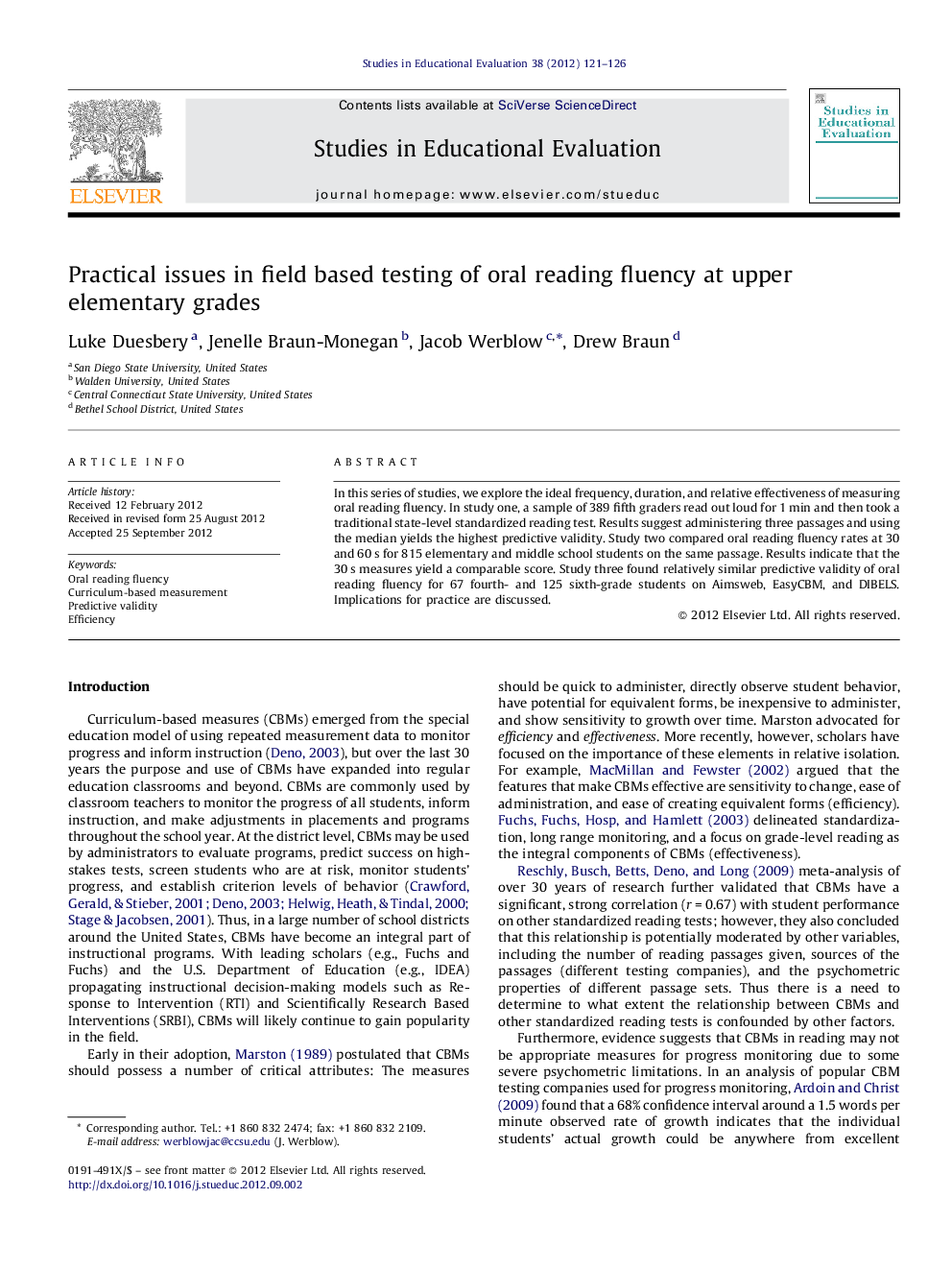| Article ID | Journal | Published Year | Pages | File Type |
|---|---|---|---|---|
| 372693 | Studies in Educational Evaluation | 2012 | 6 Pages |
In this series of studies, we explore the ideal frequency, duration, and relative effectiveness of measuring oral reading fluency. In study one, a sample of 389 fifth graders read out loud for 1 min and then took a traditional state-level standardized reading test. Results suggest administering three passages and using the median yields the highest predictive validity. Study two compared oral reading fluency rates at 30 and 60 s for 815 elementary and middle school students on the same passage. Results indicate that the 30 s measures yield a comparable score. Study three found relatively similar predictive validity of oral reading fluency for 67 fourth- and 125 sixth-grade students on Aimsweb, EasyCBM, and DIBELS. Implications for practice are discussed.
► We explore ideal frequency, duration, and relative effectiveness of oral reading fluency. ► Administering three passages and using the median yields the highest predictive validity, but two is nearly as accurate. ► Abbreviating the measure to 30 s yields information comparable to the 60 s measure. ► Aimsweb, EasyCBM, and DIBELS passages have relatively similar predictive validity.
